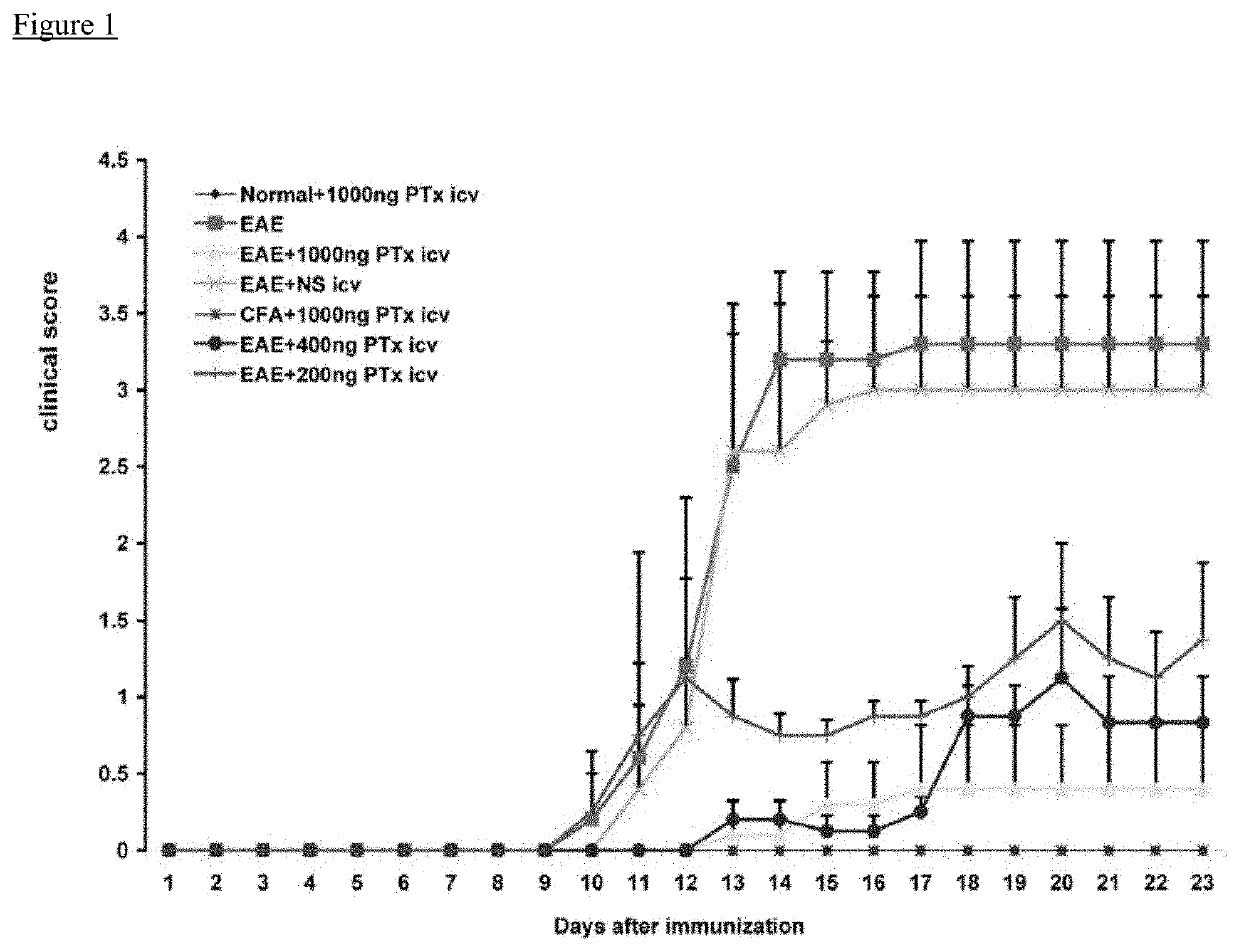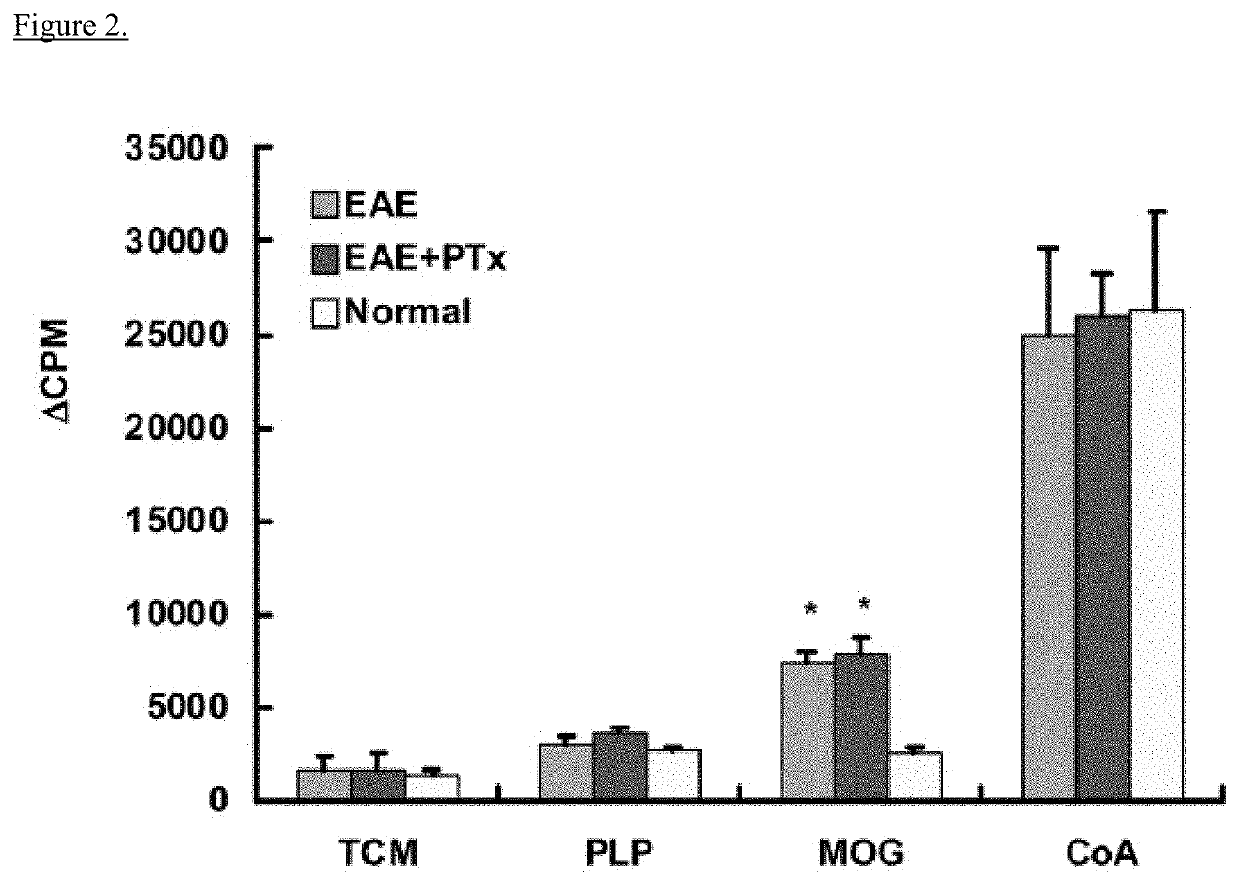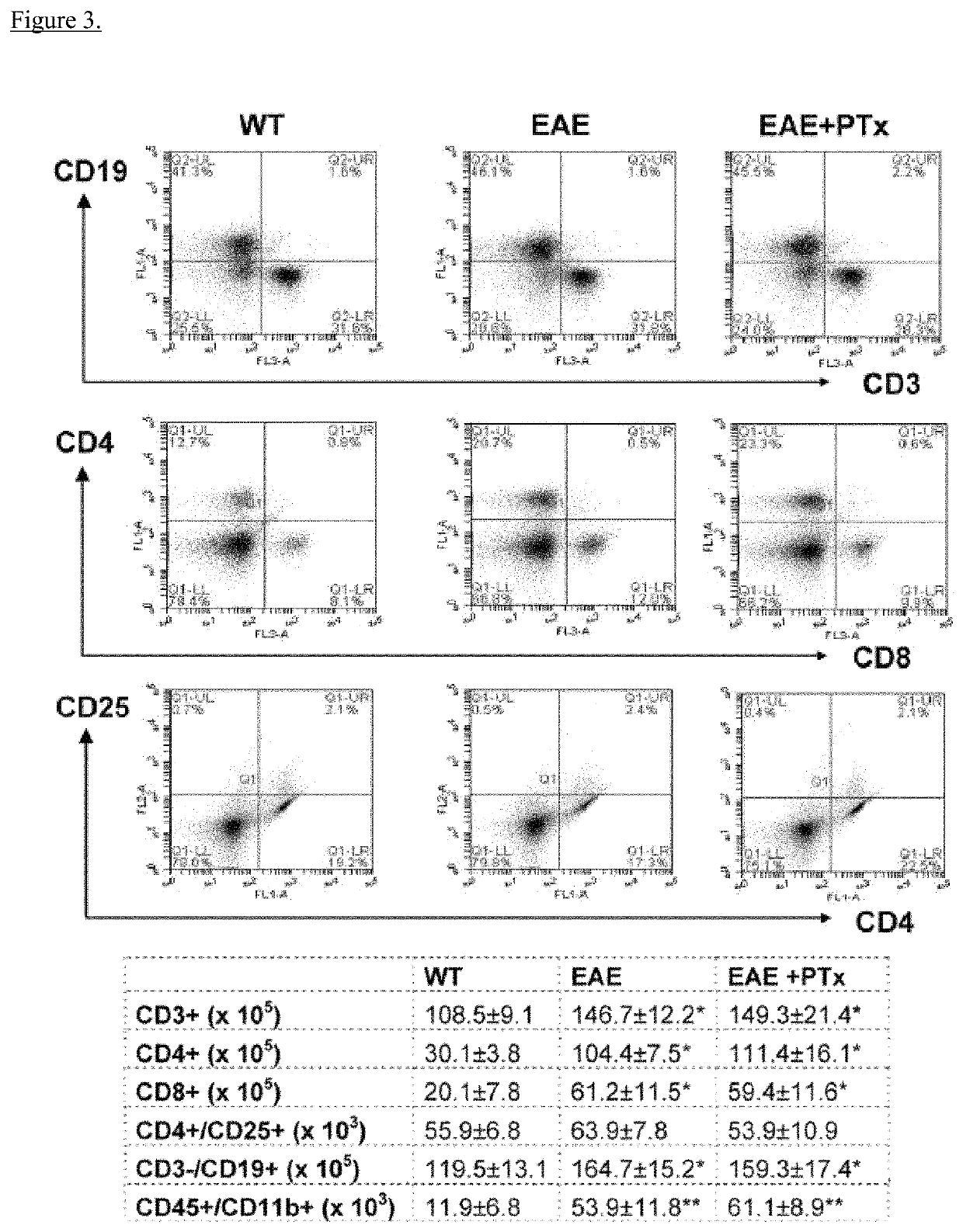Use of pertussis toxin as a therapeutic agent
a technology of pertussis and toxin, applied in the field of medicine and neurology and autoimmunity, can solve the problems of various neurological symptoms, permanent neurological problems, and the inability of nerve cells in the brain and spinal cord to effectively communicate with each other, so as to improve the effects of neurologic disease, and improve the effect of neurologic diseas
- Summary
- Abstract
- Description
- Claims
- Application Information
AI Technical Summary
Benefits of technology
Problems solved by technology
Method used
Image
Examples
example 1
Generally
[0063]Experimental autoimmune encephalomyelitis (EAE) models are important vehicles for studying the effect of infectious elements such as Pertussis toxin (PTx) on disease processes related to acute demyelinating encephalomyelitis (ADEM) or multiple sclerosis (MS). PTx has pleotropic effects on the immune system. The inventors investigated the effects of PTx administered intracerebroventricularly (icv) in preventing downstream immune cell infiltration and demyelination of the spinal cord.
[0064]Methods and Findings: EAE was induced in C57BL / 6 mice with MOG35-55. PTx icv at seven days post MOG immunization resulted in mitigation of clinical motor symptoms, minimal T cell infiltration, and the marked absence of axonal loss and demyelination of the spinal cord. Integrity of the blood brain barrier was compromised in the brain whereas spinal cord BBB integrity remained intact. PTx icv markedly increased microglia numbers in the brain preventing their migration to the spinal cord...
example 2
EAE Induction and Treatment
[0066]The animals were kept in groups on a 12:12 h light / dark cycle with food and water ad libitum. EAE was induced in female C57BL / 6 mice (6-8 weeks old, Taconic Laboratory, New York, USA) by subcutaneous injection with 200 mg myelin oligodendrocyte glycoprotein (MOG35-55; M-E-V-G-W-Y-R-S-P-F-S-R-V-V-H-L-Y-R-N-G-K, Bio-synthesis Inc. Lewisville, Tex.), dissolved in an emulsion of 50 ml of complete Freund's adjuvant containing 0.5 mg of heat killed Mycobacterium tuberculosis (CFA, Difco Laboratories, Detroit, Mich.) and 50 ml of phosphate buffered saline (PBS). On the day of immunization (day 0) and 48 h later (day 2), PTx (List Biological laboratories Inc.) 200 ng in PBS was injected into the mouse tail vein. Neurological functional tests were performed by an examiner blinded to the treatment status of each animal. Functional data were collected on 7 mouse groups (n=12 / group), 3 PTx icv treatment groups (EAE+PTx icv 1000 ng, 400 ng, and 200 ng), 2 EAE gro...
example 3
Stereotactic Intracerebroventricular Injection
[0067]Mice were anaesthetized by injection of a ketamine / xylamine cocktail on day 7 after MOG35-55 immunization and mounted in a stereotactic device. A fine hole was drilled through the skull giving access to the surface of the brain 0.7 mm caudal to bregma and 1.0 mm lateral to the sagittal suture. A guarded, 27-gauge 0.5-in needle was stereotactically inserted, targeting the lateral ventricle (3.5 mm depth). A 10.0-ml Hamilton 1700 series gastight syringe was used to inject 2 ml of normal saline, or PTx (500 mg / ml dissolved in normal saline) into the lateral ventricle over a five-minute period.
PUM
| Property | Measurement | Unit |
|---|---|---|
| concentration | aaaaa | aaaaa |
| concentration | aaaaa | aaaaa |
| depth | aaaaa | aaaaa |
Abstract
Description
Claims
Application Information
 Login to View More
Login to View More - R&D
- Intellectual Property
- Life Sciences
- Materials
- Tech Scout
- Unparalleled Data Quality
- Higher Quality Content
- 60% Fewer Hallucinations
Browse by: Latest US Patents, China's latest patents, Technical Efficacy Thesaurus, Application Domain, Technology Topic, Popular Technical Reports.
© 2025 PatSnap. All rights reserved.Legal|Privacy policy|Modern Slavery Act Transparency Statement|Sitemap|About US| Contact US: help@patsnap.com



